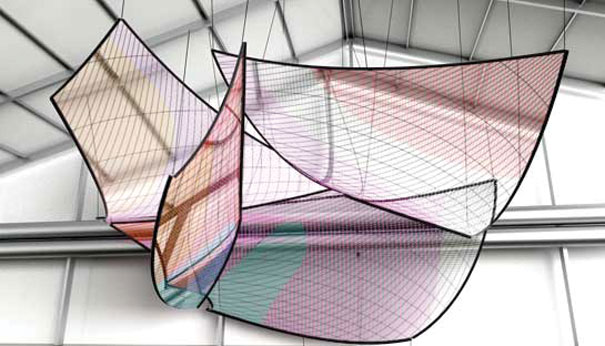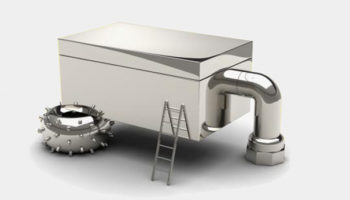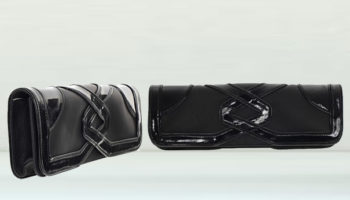Swarovski Crystal Palace at Design Miami: Panels by Greg Lynn
Every Swarovski Crystal Palace installation is worth seeing—and American architect Greg Lynn’s creation for Design Miami is no exception. On view from December 1-5 at the Designer’s Lounge, the piece by Lynn takes up 375,000 square feet of space. The giant Swarovski opus differs from past Crystal Palace exhibits in that it incorporates 1,500,000 crystals as part of something greater. Lynn explains: “When Swarovski contacted me, I immediately thought of the translucent laminate sails as way of getting the crystals suspended in the air—not as an objects but as a sheet or surface through which light could pass and be reflected.”
Crystal Palace at Design Miami. Created in collaboration with Lynn Swarovski and Greg Lynn.
The seven-foot high structure uses 383,858 feet of carbon and aramid fibers compressed between Mylar to create great sails that shimmer with the inimitable crystals. Yet the installation remains lightweight: the panels can be folded and packed in a relatively small space for transport. And speaking of transport, the Lynn Swarovski work conveys the kinetic pleasure of movement. Specifically, it represents ocean travel—quite appropriate for Miami due to its geographic location and nautical culture. Like a sculptural incarnation of an Italian Futurist painting, Lynn’s Crystal Palace installation revels in suspension and passage. And speaking of futurist, the gargantuan “mobile” uses post-millennial technology: the panels were assembled by computer-guided robots at the North Sails 3DL factory.


Lynn’s work is an ode to sailing. It tells the entire story of a transoceanic voyage. From blue to aquamarine, pink to red, the crystals recall everything from sea to sand to sky. The sails slice through sapphire waters while a burning sunset illuminates the horizon line in flames of roseate color. Lynn has accomplished something remarkable by using the material—that unique shimmer of Swarovski crystals—to create something greater. His installation enables us to see past the beauty of the isolated object in order to experience a vision.



Leave a Reply